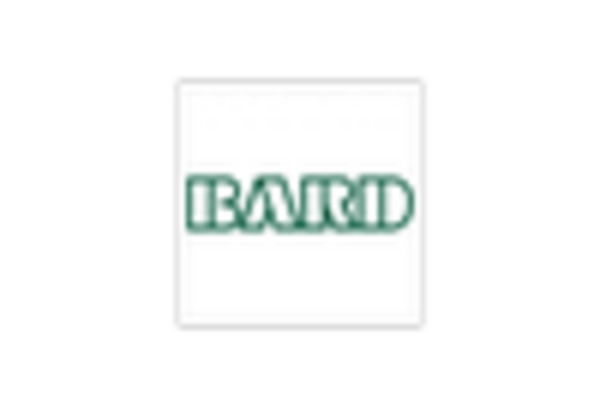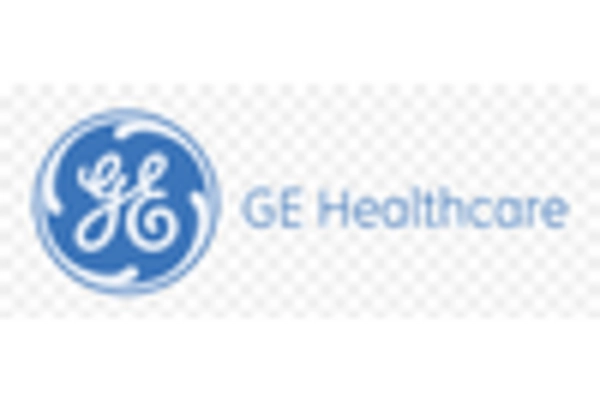Rising Incidence of Breast Cancer
The increasing incidence of breast cancer in the US is a primary driver for the localization market. According to the American Cancer Society, approximately 1 in 8 women will develop invasive breast cancer during their lifetime. This alarming statistic underscores the necessity for effective localization techniques to ensure accurate diagnosis and treatment. As the number of diagnosed cases rises, healthcare providers are compelled to adopt advanced localization technologies to enhance patient outcomes. The breast lesion-localization market is expected to grow as hospitals and clinics invest in innovative solutions to address this health crisis. Furthermore, the demand for precise localization methods is likely to increase as awareness of breast cancer screening and early detection continues to rise among the population.
Increased Focus on Early Detection
The growing emphasis on early detection of breast cancer is a significant driver for the breast lesion-localization market. Initiatives aimed at promoting regular screening and awareness campaigns have led to a higher number of women undergoing mammograms and other diagnostic procedures. This trend is likely to result in an increased demand for localization techniques that assist in identifying and targeting lesions at an early stage. The breast lesion-localization market is expected to benefit from this shift, as healthcare providers seek to implement effective solutions that align with early detection strategies. Moreover, the financial implications of early detection, which can lead to reduced treatment costs and improved survival rates, further underscore the importance of investing in localization technologies.
Technological Innovations in Imaging
Technological innovations in imaging modalities are significantly influencing the breast lesion-localization market. Advanced imaging techniques, such as 3D mammography and MRI, provide enhanced visualization of breast lesions, facilitating more accurate localization. These innovations are crucial for guiding biopsies and surgical interventions, thereby improving patient outcomes. The integration of artificial intelligence in imaging analysis is also emerging, potentially increasing the efficiency and accuracy of lesion detection. As healthcare facilities in the US adopt these cutting-edge technologies, the breast lesion-localization market is poised for substantial growth. The market is projected to expand as providers seek to leverage these advancements to enhance diagnostic capabilities and streamline treatment processes.
Growing Demand for Personalized Medicine
The shift towards personalized medicine is reshaping the landscape of the breast lesion-localization market. As treatment plans become increasingly tailored to individual patient profiles, the need for precise localization of lesions becomes paramount. Personalized approaches often require detailed imaging and localization to ensure that therapies are effectively targeted. This trend is likely to drive the adoption of advanced localization technologies that can provide the necessary accuracy and specificity. The breast lesion-localization market may experience growth as healthcare providers invest in solutions that support personalized treatment plans, ultimately enhancing patient care and outcomes.
Regulatory Support for Innovative Solutions
Regulatory support for innovative solutions in the healthcare sector is a crucial driver for the breast lesion-localization market. The US Food and Drug Administration (FDA) has been actively working to streamline the approval process for new medical devices and technologies, which encourages the development of advanced localization methods. This supportive regulatory environment fosters innovation and allows manufacturers to bring new products to market more efficiently. As a result, the breast lesion-localization market is likely to see an influx of novel solutions that enhance diagnostic accuracy and treatment efficacy. The collaboration between regulatory bodies and industry stakeholders may further accelerate the adoption of these innovations, ultimately benefiting patients and healthcare providers alike.

















Leave a Comment